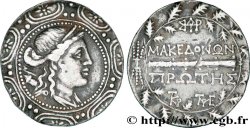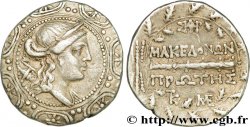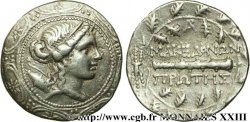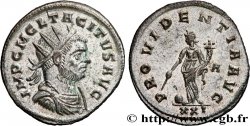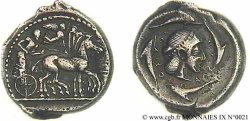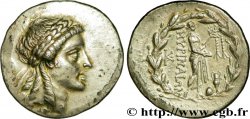- Accueil
- >
- >
v18_0060 - MACEDONIA - AMPHIPOLIS Tétradrachme stéphanophore
MONNAIES 18 (2003)
Starting price : 950.00 €
Estimate : 1 800.00 €
Realised price : 2 460.00 €
Number of bids : 9
Maximum bid : 2 915.00 €
Starting price : 950.00 €
Estimate : 1 800.00 €
Realised price : 2 460.00 €
Number of bids : 9
Maximum bid : 2 915.00 €
Type : Tétradrachme stéphanophore
Date: c. 148-147 AC.
Mint name / Town : Macédoine, Amphipolis
Metal : silver
Diameter : 29,5 mm
Orientation dies : 3 h.
Weight : 16,74 g.
Rarity : R2
Emission: 2e
Coments on the condition:
Exemplaire de qualité exceptionnelle pour ce type de monnayage avec une extraordinaire patine de médaillier à reflets gris bleutés, mordorés au revers. Revers de toute beauté, parfaitement centré
Catalogue references :
Predigree :
Cet exemplaire provient d’une vieille collection des années 30
Obverse
Obverse legend : ANÉPIGRAPHE.
Obverse description : Buste diadèmé et drapé d'Artémis Tauropolos à droite, l'arc et le carquois sur l'épaule, placé au centre d'un bouclier macédonien orné d'étoiles.
Reverse
Reverse legend : LEG/.
Reverse description : de chaque côté d'une massue ; au-dessus, main tenant un rameau d’olivier ; au-dessous, un monogramme ; le tout dans une couronne de chêne fermée par un foudre.
Reverse legend : MAKEDONWN
Commentary
Le seul autre exemplaire connu avec ce monogramme provient de la vente de la liste Ratto 6 (1922), n° 1305, de la vente Ratto du 4 avril 1927, n° 769, de la vente Baranowsky du 25 février 1931, n° 460 et de la liste Ratto 14 (1935), n° 1618. Il est de mêmes coins que notre tétradrachme, celui-ci étant en meilleur état. L’axe des coins pourrait être à 6 heures, la massue étant alors placée verticalement.
The only other known example with this monogram comes from the sale of Ratto list 6 (1922), no. 1305, from the Ratto sale of April 4, 1927, no. 769, from the Baranowsky sale of February 25, 1931, no. 460 and from the Ratto list 14 (1935), no. 1618. It has the same dies as our tetradrachm, the latter being in better condition. The die axis could be at 6 o'clock, the club then being placed vertically
The only other known example with this monogram comes from the sale of Ratto list 6 (1922), no. 1305, from the Ratto sale of April 4, 1927, no. 769, from the Baranowsky sale of February 25, 1931, no. 460 and from the Ratto list 14 (1935), no. 1618. It has the same dies as our tetradrachm, the latter being in better condition. The die axis could be at 6 o'clock, the club then being placed vertically







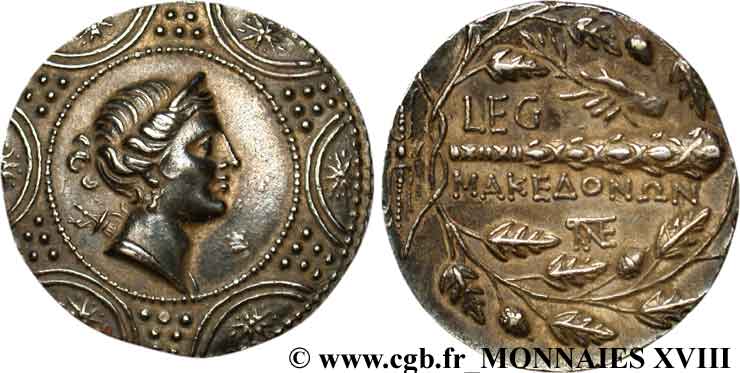
 Report a mistake
Report a mistake Print the page
Print the page Share my selection
Share my selection Ask a question
Ask a question Consign / sell
Consign / sell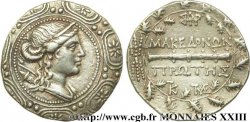
 Full data
Full data

